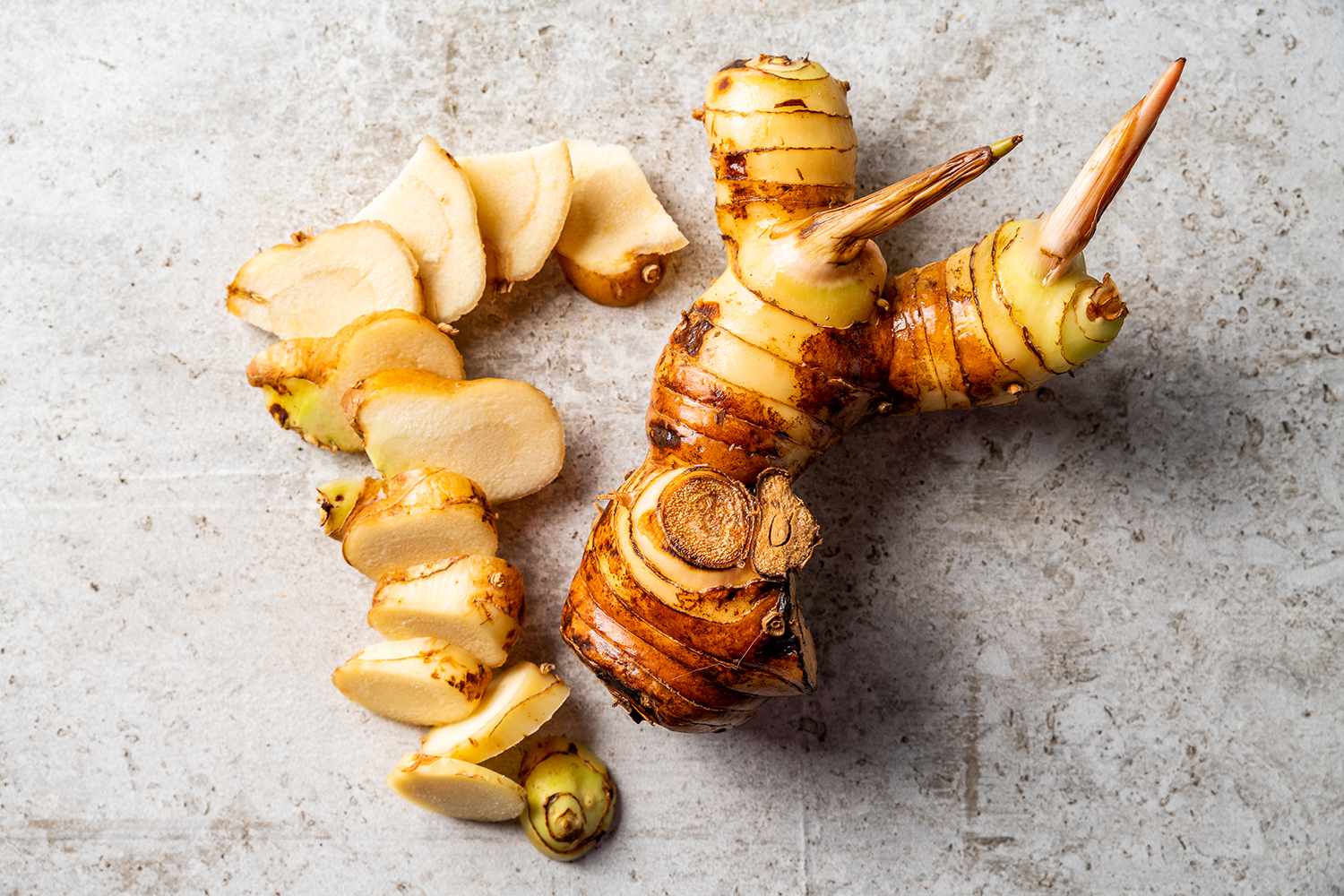
Galangal might sound exotic, but it's a common ingredient in many Asian kitchens. Often mistaken for ginger, this root packs a unique punch with its citrusy, pine-like flavor. But what exactly is galangal, and why should you care? Galangal is not just a spice; it's a powerhouse of health benefits and culinary versatility. From soups to teas, this root can elevate your dishes and boost your well-being. Curious about its origins, uses, and benefits? You're in the right place. Let's dive into 20 fascinating facts about galangal that will make you appreciate this incredible root even more.
Key Takeaways:
- Galangal, a root spice from Southeast Asia, has a rich history and cultural significance. It's used in Thai curry pastes, soups, and marinades, and offers health benefits like anti-inflammatory and antioxidant properties.
- With varieties like greater, lesser, and aromatic galangal, this spice adds depth and complexity to dishes. It's also known for its anti-inflammatory, antioxidant, and digestive benefits, making it a versatile and valuable ingredient in Asian cuisines.
What is Galangal?
Galangal, often mistaken for ginger, is a root spice used in many Asian cuisines. Its unique flavor and health benefits make it a staple in various dishes. Let's dive into some fascinating facts about this intriguing root.
Origin and History
Understanding where galangal comes from and its historical significance can give us a deeper appreciation for this spice.
-
Galangal is native to Southeast Asia. It has been used in traditional medicine and cooking for centuries in countries like Thailand, Indonesia, and Malaysia.
-
The name "galangal" comes from the Arabic word "khalanjan." This term was derived from the Chinese word "gao liang jiang," which means "high-quality ginger."
-
In medieval Europe, galangal was known as "galingale." It was a popular spice among the wealthy and was often used in cooking and medicine.
Types of Galangal
There are different varieties of galangal, each with its own unique characteristics.
-
Greater galangal (Alpinia galanga) is the most common type. It has a sharp, citrusy flavor and is often used in Thai and Indonesian dishes.
-
Lesser galangal (Alpinia officinarum) has a more intense, peppery taste. This variety is commonly used in traditional Chinese medicine.
-
Kaempferia galanga, also known as aromatic ginger, is another variety. It has a milder flavor and is used in some Southeast Asian cuisines.
Culinary Uses
Galangal's distinct taste makes it a versatile ingredient in many recipes.
-
Galangal is a key ingredient in Thai curry pastes. Its unique flavor adds depth and complexity to the dishes.
-
It is often used in soups like Tom Yum. The root imparts a spicy, aromatic quality that enhances the broth.
-
Galangal can be used in marinades for meat and seafood. Its strong flavor helps to tenderize and infuse the proteins with a zesty taste.
Health Benefits
Beyond its culinary uses, galangal offers several health benefits.
-
Galangal has anti-inflammatory properties. It contains compounds that can help reduce inflammation in the body.
-
It is rich in antioxidants. These compounds help protect the body from damage caused by free radicals.
-
Galangal can aid in digestion. It stimulates the production of digestive enzymes, which can help improve gut health.
-
It has antimicrobial properties. Galangal can help fight off bacteria and other pathogens.
Cultural Significance
Galangal holds a special place in the cultures where it is commonly used.
-
In Thai culture, galangal is considered a symbol of good luck. It is often used in rituals and ceremonies.
-
In traditional Chinese medicine, galangal is used to treat various ailments. It is believed to help with digestive issues, respiratory problems, and more.
-
Galangal is also used in Ayurvedic medicine. It is considered a warming spice that can help balance the body's energies.
Growing and Harvesting
Learning about how galangal is cultivated can give us a better understanding of this spice.
-
Galangal is a perennial plant. It can grow up to 2 meters tall and has long, blade-like leaves.
-
The root is harvested after about 10 months of growth. It is then cleaned, dried, and prepared for use in cooking and medicine.
-
Galangal can be grown in home gardens. It requires a warm, humid climate and well-drained soil.
Fun Facts
Here are some interesting tidbits about galangal that you might not know.
- Galangal is sometimes called "Siamese ginger." This nickname highlights its close relationship to ginger, even though they have distinct flavors and uses.
Final Thoughts on Galangal
Galangal, often overshadowed by its cousin ginger, packs a punch in both flavor and health benefits. This spice, with its unique citrusy and piney taste, has been a staple in Southeast Asian cuisine for centuries. Beyond the kitchen, galangal boasts impressive medicinal properties. It aids digestion, reduces inflammation, and even has antimicrobial effects. Whether you're a culinary enthusiast or someone looking to boost your health, incorporating galangal into your diet can be a game-changer. Next time you're at the grocery store, don't overlook this powerhouse root. Give it a try in your soups, curries, or teas. You'll not only elevate your dishes but also reap the numerous health benefits it offers. So, why not spice up your life with a bit of galangal?
Frequently Asked Questions
Was this page helpful?
Our commitment to delivering trustworthy and engaging content is at the heart of what we do. Each fact on our site is contributed by real users like you, bringing a wealth of diverse insights and information. To ensure the highest standards of accuracy and reliability, our dedicated editors meticulously review each submission. This process guarantees that the facts we share are not only fascinating but also credible. Trust in our commitment to quality and authenticity as you explore and learn with us.


